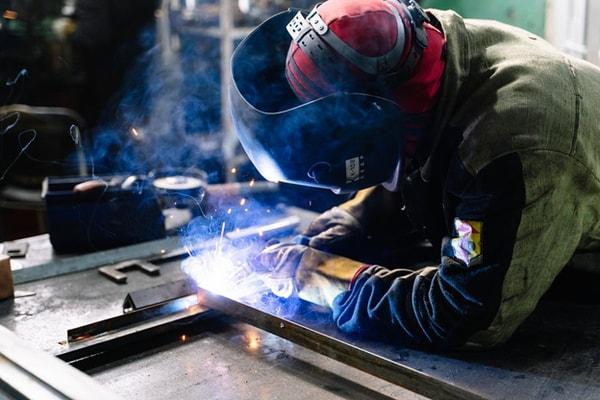Developing a Welding WPS: Step-by-Step Instructions for Professionals
Developing a Welding WPS: Step-by-Step Instructions for Professionals
Blog Article
The Ultimate Overview to Welding WPS Procedures: A Detailed Overview for Welders
In the elaborate world of welding, Welding Treatment Requirements (WPS) serve as the backbone of making sure high quality, uniformity, and safety in welding operations (welding WPS). As we dig into the different components of a WPS and check out the details of qualification and certification, we will certainly reveal the crucial function these procedures play in the realm of welding.
Relevance of WPS Procedures
Understanding the significance of Welding Treatment Requirements (WPS) procedures is important for guaranteeing the high quality and integrity of welded structures. WPS procedures function as a roadmap for welders, detailing the needed steps, specifications, and products required to accomplish an audio weld. By adhering to WPS guidelines, welders can make sure consistency in their work, resulting in structurally audio and trusted welds.
One of the main reasons why WPS procedures are necessary is their role in preserving weld high quality and honesty. Adhering to the specified welding specifications and strategies laid out in the WPS helps stop flaws such as porosity, cracking, or insufficient blend, which can jeopardize the toughness and durability of the weld.

Components of a WPS
A Welding Treatment Requirements (WPS) commonly comprises vital elements that detail the details needs for implementing a weld, making sure uniformity and quality in the welding procedure. The key parts of a WPS include crucial variables such as base steels, filler steels, interpass and preheat temperature levels, welding processes, securing gases, welding positions, and post-weld warmth therapy needs.
Base metals refer to the materials being joined, while filler metals are used to load the void in between the base steels throughout welding. The welding procedure details the specific technique to be made use of, whether it's gas metal arc welding (GMAW), secured metal arc welding (SMAW), or another technique. Welding settings define the positionings in which welding can be carried out.

Qualification and Accreditation
Having developed the necessary components of a Welding Procedure Requirements (WPS), the focus now moves towards the crucial facets of qualification and certification in welding techniques.
Certification, on the other hand, is the official recognition of a welder's certifications by a pertinent accreditation body or company. Welding qualifications are generally based upon the particular welding procedures, products, and placements a welder is find here qualified to work with. Holding a legitimate welding certification demonstrates that a welder satisfies sector requirements and is skilled to do welding jobs to the called for specifications.
Creating a WPS
To develop a Welding Treatment Specification (WPS) that meets sector criteria, careful consideration of welding processes, products, and operational specifications is crucial. The first action in developing a WPS is to identify the welding procedure to be utilized, such visit the site as gas steel arc welding (GMAW) or protected steel arc welding (SMAW)

Implementing and Monitoring WPS
Upon wrapping up the thorough Welding Procedure Requirements (WPS) that diligently details welding procedures, products, functional specifications, and quality assurance actions, the focus moves to successfully applying and monitoring the established treatments. Implementation includes making certain that all welders involved in the project know with the WPS and follow it diligently during the welding procedure. This requires offering ample training and guidance to guarantee adherence to the specified treatments. Checking the WPS includes constant oversight to confirm that welding tasks align with the documented requirements. Examinations, testing, and top quality control steps are necessary parts of the monitoring procedure to determine any kind of variances or issues quickly. Regular audits and evaluations of the welding procedures assist in maintaining consistency and top quality throughout the job. Efficient execution and monitoring of the WPS are important for making sure the stability, toughness, and safety and security of the welded joints, inevitably adding to the overall success of the welding project.
Conclusion
Finally, understanding and complying with Welding Procedure Specifications (WPS) is critical for welders to make sure top quality, uniformity, and safety in their job. By recognizing the components of a WPS, obtaining proper credentials and accreditations, creating comprehensive treatments, and applying and checking them efficiently, welders can boost their skills and proficiency in welding methods. Sticking to WPS treatments is essential for producing premium welds and conference sector standards.
In the elaborate world of welding, Welding Treatment Specs (WPS) offer as the foundation of making certain high quality, uniformity, and safety in welding procedures. The welding procedure details the particular technique to be used, whether it's gas metal arc welding (GMAW), shielded steel arc welding (SMAW), or an additional technique.To establish a Welding Procedure Spec (WPS) that meets industry standards, careful factor to consider of welding processes, products, and functional specifications is crucial. The first action in producing a WPS is to recognize the welding process to be made use of, such as gas steel arc welding (GMAW) or shielded metal arc welding (SMAW)Upon completing the thorough Welding Procedure Requirements (WPS) that carefully details welding procedures, materials, operational criteria, and check that quality guarantee actions, the emphasis moves to efficiently carrying out and monitoring the recognized procedures.
Report this page